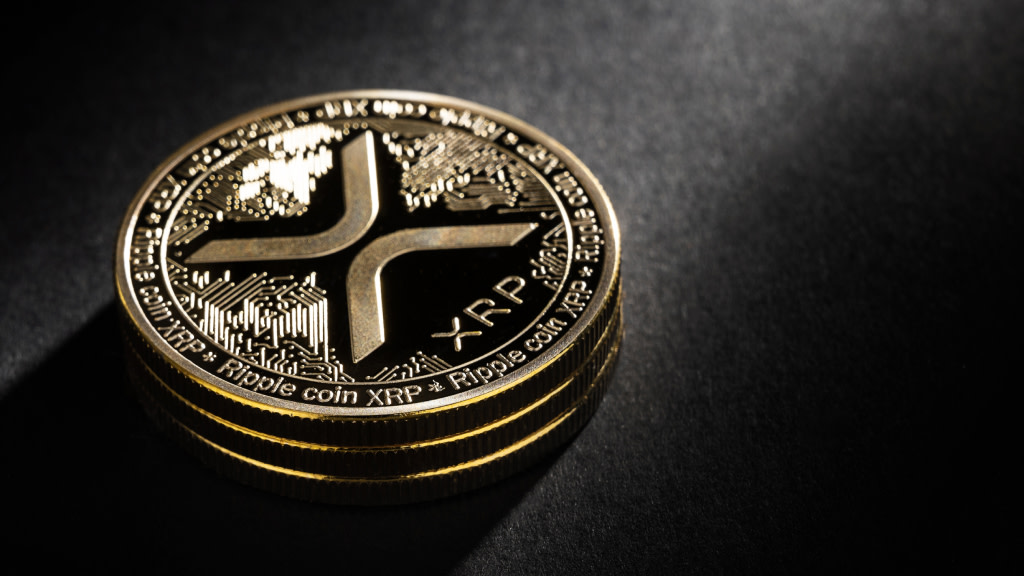According to a recent analysis by DecenTrader, Bitcoin is expected to reach new all-time highs in 2024, but not without some challenges along the way.
The analysis, released on February 2nd, suggests that Bitcoin’s price behavior will follow a typical pattern during a “halving year.”
DecenTrader predicts that Bitcoin will experience about a month of sideways price movement before the market reacts to the upcoming block subsidy halving.
CEO and co-founder Filbfilb explains that investors should anticipate a surge in buying activity approximately two months before the halving, which is currently estimated to occur on April 18.
However, following this buying surge, there may be another “sell the news event,” similar to what happened when spot Bitcoin exchange-traded funds (ETFs) were launched in January.
Filbfilb points out that there are roughly 75 days remaining until the Bitcoin halving, suggesting that buying interest is likely to start no later than six weeks before the event, or around the second week of March.
This anticipation among speculators could drive Bitcoin’s price to its current two-year high of $49,000 before a sell-off resembling the ETF launch occurs.
Nevertheless, the path ahead appears promising, as price discovery is expected to happen before the end of 2024, similar to the outcome of Bitcoin’s last halving year in 2020.
READ MORE: European Union Achieves Landmark Approval of AI Regulation with EU’s AI Act
Filbfilb advises investors to be aware that Bitcoin tends to front-run the “sell-the-news” phenomenon associated with halving events.
Despite the optimism surrounding Bitcoin’s potential for a new all-time high, the first quarter of 2024 may be challenging for traders.
In addition to Bitcoin-specific factors, macroeconomic and geopolitical uncertainties could contribute to wider risk-asset turbulence.
Concerns include the weakness of the United States banking system, which former BitMEX CEO Arthur Hayes expects to come to a head in March.
Some analysts even believe that Bitcoin may not reach a new all-time high until the end of 2025.
Filbfilb remains cautious and warns against excessive optimism, emphasizing that previous market cycles in Bitcoin have followed a consistent pattern driven by investor emotions.
As Bitcoin traded just under $43,000 into the February 4th weekly close, the cryptocurrency market’s trajectory remains uncertain, with various factors influencing its future performance.
Bankrupt cryptocurrency exchange FTX has made a request to the United States Bankruptcy Court for the District of Delaware, seeking approval to liquidate its entire ownership in the artificial intelligence (AI) company, Anthropic.
This move follows a series of financial troubles that have plagued FTX in recent times, leading to the bankruptcy filing.
The ownership stake in Anthropic, consisting of Series B preferred stock and associated rights or interests, was originally held by Alameda Research, a sister company of FTX.
It was revealed that Sam Bankman-Fried, FTX’s former CEO, had invested approximately $530 in Anthropic back in April 2022.
This investment was notably sourced from customer deposits on FTX, a fact disclosed during Bankman-Fried’s legal trial in October 2023.
At the time of Anthropic’s Series B funding round closure in April 2022, Alameda Research held a substantial 13.56% ownership stake.
However, subsequent funding rounds diluted their participation, leaving them with a reduced stake of 7.84% as of January.
READ MORE: Crypto Trading Course Instructor Faces SEC Charges for $1.2 Million Hedge Fund Deception
Remarkably, Anthropic’s valuation had surged to $18 billion by December 2023, making Alameda’s remaining stake worth an estimated $1.4 billion.
FTX is also pursuing an expedited review process for its sale motion, aiming for a resolution during the upcoming bankruptcy court meeting scheduled for February 22.
This flexibility in the sale timeline is seen as a means to capitalize on potential demand for Anthropic’s equity securities, which may arise from future financing rounds.
This divestment from Anthropic is a crucial part of FTX’s efforts under new management to recover funds and fulfill its commitments to customers and creditors.
The exchange’s legal representative, Andy Dietderich, affirmed that FTX possesses the potential to fully reimburse its users and creditors, eliminating the need for plans to relaunch the exchange.
In a related development, FTX filed a similar motion on February 1, seeking approval to sell a $175 million claim against the bankrupt digital financial services firm, Genesis Global Capital.
These strategic moves underscore FTX’s determination to resolve its financial predicament and meet its obligations in an efficient manner.
The adoption of Spot Bitcoin exchange-traded funds (ETFs) is facing delays due to meticulous due diligence processes conducted by major trading platforms.
LPL Financial Holdings, one of the United States’ largest independent broker-dealers, is currently scrutinizing the recently approved Bitcoin ETFs.
This evaluation aims to determine their suitability for approximately 19,000 independent financial advisers overseeing assets worth $1.4 trillion.
Rob Pettman, Vice President of Wealth Management Solutions at LPL Financial, explained, “We just want to see how they work in the markets.”
Due diligence involves a thorough analysis to understand risks, opportunities, and the authenticity of investments before allocating resources.
LPL Financial intends to complete its due diligence on Bitcoin ETFs within three months.
They are particularly concerned about the possibility of ETFs being shut down if they fail to accumulate significant assets.
Pettman emphasized the negative impact this could have on investors, financial advisers, and the operational costs incurred by firms like LPL.
Bloomberg data reveals that in 2023, 253 ETFs, including cryptocurrency-related ones like VanEck Digital Assets Mining ETF and Volt Crypto Industry Revolution, closed down with average assets of $34 million.
James Seyffart, Bloomberg’s ETF analyst, believes that the widespread adoption of Bitcoin ETFs might be slower than anticipated.
He predicted during a private webinar with CryptoQuant in January that ETFs could attract $10 billion in inflows within their first year.
READ MORE: Bitcoin Stumbles as Strong U.S. Job Data Sparks Rate Hike Fears
Seyffart explained that large institutions and platforms have approved lists, limiting their investment options.
He added, “I do not think we’re going to get over $100 billion in the first year or two. To put it in perspective, gold ETFs have about $100 billion in the U.S. in total.”
As of January 31, all the Bitcoin ETFs approved the previous month collectively held 656,421 BTC, reflecting a 3% increase from the initial total of 637,610 BTC, valued at nearly $27 billion at current prices.
The ETFs’ performances were affected by outflows from the Grayscale Bitcoin Trust, which sold 132,195 Bitcoin following its transition from an over-the-counter product to a listed ETF.
LPL’s Pettman summed up the situation, stating, “Time is going to tell on the investment thesis, and that’s essentially what we’re monitoring at the moment.”
The cautious approach by platforms like LPL Financial highlights the need for thorough evaluation before embracing the Bitcoin ETFs in the market.
The United States Department of Justice (DOJ) has filed charges against two senior staff members from the Patterson Joint Unified School District.
They are accused of running a cryptocurrency mining operation on the premises of the district’s 10 schools, using school resources and significantly increasing electricity costs.
In a recent DOJ statement, it was alleged that Jeffrey Menge, the assistant superintendent, and Eric Drabert, the IT director of the Patterson Joint Unified School District, collaborated to establish a cryptocurrency mining farm and profited from it.
The operation involved the purchase of high-end graphics cards, as well as the utilization of other school district assets and electricity for mining.
The statement, however, did not specify how many schools were involved in the crypto mining operation within the 10-school district, which serves approximately 6,200 students.
Furthermore, the type of cryptocurrency being mined was not disclosed, although commonly mined cryptocurrencies include Bitcoin, Monero, Ravencoin (RVN), and Dogecoin.
READ MORE: ARK Invest’s 2023 Report Advocates 19.4% Bitcoin Allocation for Optimal Institutional Returns
Data from CoinGecko indicates that mining a single Bitcoin as a solo miner consumes about 266,000 kilowatt hours of electricity, equivalent to approximately seven years of continuous consumption at a rate of 143 kWh per month.
In addition to the crypto mining allegations, the DOJ asserted that Menge embezzled between $1 million and $1.5 million, while Drabert misappropriated between $250,000 and $300,000.
These charges coincide with a recent crackdown by the U.S. energy regulator on cryptocurrency miners as part of an initiative to reduce energy wastage in the country.
On February 1st, the United States Department of Energy (DOE) mandated that crypto miners must report their energy consumption for the next six months.
This move comes in response to concerns regarding the spike in Bitcoin prices, leading to a surge in crypto mining activities.
Additionally, the U.S. Energy Information Administration (EIA) announced its intention to conduct a survey to measure the electricity usage of local crypto mining companies, beginning the following week. Miners will be required to provide details regarding their energy consumption.
The issue of excessive electricity consumption by crypto mining operations is not limited to the United States.
In December 2023, Indonesian police authorities shut down 10 Bitcoin mining operations, accusing organizers of electricity theft amounting to nearly $1 million. Global regulators are increasingly taking steps to address this concern.
The European Union has taken a significant step in advancing its regulatory framework for artificial intelligence (AI) as all 27 member states voted to approve the final text of the EU’s AI Act.
Thierry Breton, the Commissioner for Internal Market of the EU, confirmed this momentous endorsement, emphasizing the historical significance of the AI Act, which marks a world-first achievement.
The AI Act is a comprehensive risk-based strategy designed to regulate various AI applications.
It covers a wide range of aspects, including the use of AI in government applications, the regulation of AI systems like ChatGPT, and the implementation of transparency rules that must be adhered to prior to entering the market.
Following the political agreement reached in December 2023, efforts were undertaken to transform the agreed-upon positions into a final compromise text for approval by lawmakers.
The culmination of this process was the “coreper” vote on February 2, which involved the permanent representatives of all member states.
One of the key concerns addressed by the AI Act is the proliferation of deepfakes – convincingly fabricated videos generated by AI algorithms that have the potential to blur the line between truth and fiction in public discourse.
Margrethe Vestager, Executive Vice President of the European Commission for A Europe Fit for the Digital Age, highlighted the Act’s emphasis on assigning greater liabilities to developers of riskier AI applications.
For instance, the Act focuses on high-risk cases, such as using AI for job applicant screening or educational admissions.
READ MORE: Binance Denies Security Breach: Outdated Data on GitHub Posed Minimal Risk
The recent agreement on the AI Act was achieved after France withdrew its objections, and Germany also threw its support behind the Act following a compromise reached by Federal Minister for Digital Affairs and Transport, Volker Wissing, on January 30.
The AI Act is now set to progress towards legislation, with a crucial vote scheduled in an EU lawmaker committee on February 13, followed by a vote in the European Parliament in March or April.
It is anticipated that the Act will be fully applied in 2026, with specific provisions taking effect earlier.
Additionally, the European Commission is taking proactive steps to establish an AI Office responsible for monitoring compliance with a group of high-impact foundational AI models considered to pose systemic risks.
The Commission is also unveiling measures to support local AI developers, including upgrading the EU’s supercomputer network to enhance generative AI model training capabilities.
On February 2nd, Bitcoin experienced a sudden drop as the Wall Street trading day began, with a notable $500 hourly candle dip recorded on Bitstamp.
This unexpected plunge was in direct response to the release of the United States unemployment data, which revealed a surprising surge.
The figures for January nonfarm payrolls came in at a staggering 353,000, almost double the expected 185,000, catching both the market and analysts off guard, according to Reuters.
The immediate market reaction suggested that the previously assumed negative impact of restrictive economic policies on the U.S. economy might be less severe than anticipated.
This led to concerns that interest rates could remain elevated for a longer period, potentially reducing liquidity in various asset classes, including cryptocurrencies.
On January 31st, the Federal Reserve had unanimously decided to maintain interest rates at their existing levels, with Fed Chair Jerome Powell trying to quell speculation about rate cuts occurring in March.
The release of the jobless data further cemented the belief that a rate cut before May was unlikely, causing the odds of such a move in March to drop from 45% earlier in the week to 17.5%.
Caleb Franzen, the founder of Cubic Analytics, responded to the data by highlighting that revisions had actually increased the December job figures, suggesting that doubters of the economy were consistently proven wrong.
READ MORE: Bitcoin’s Persistent Sideways Trend: A Familiar Pattern Amidst Market Uncertainty
Financial commentator Tedtalksmacro remained optimistic, asserting that strong employment data was beneficial in the long run, and the market had simply overreacted by pricing in rate cuts prematurely.
In addition to these challenges, the U.S. Dollar Index (DXY) surged to new 2024 highs, exerting further pressure on the cryptocurrency market.
However, there was a glimmer of hope for Bitcoin enthusiasts as outflows from the Grayscale Bitcoin Trust (GBTC), a recently launched spot Bitcoin exchange-traded fund (ETF), provided some relief.
Coinbase received 4,400 BTC in inflows on that day, a decrease from previous days and a significant drop from the peak of 25,000 BTC observed in January.
Despite this, total net inflows reached $38 million, signifying continued interest in cryptocurrencies.
In a volatile market shaped by economic data and monetary policy speculation, Bitcoin and other cryptocurrencies faced uncertainty and challenges, with traders and analysts closely monitoring every development.
A cryptocurrency trading course instructor, Brian Sewell, is currently facing charges filed by the United States Securities and Exchange Commission (SEC) for allegedly deceiving 15 students into investing a total of $1.2 million in a hedge fund that never came to fruition.
Despite touting cutting-edge technology and promising substantial returns, Sewell is accused of misappropriating the funds for personal gain, without ever initiating the proposed investment fund.
According to the recent SEC statement, Sewell, the founder of Rockwell Capital Management, allegedly encouraged investors to deposit their money into a non-existent hedge fund from early 2018 to mid-2019.
The SEC complaint asserts that Sewell received approximately $1.2 million from the 15 students but failed to launch the fund or implement the trading strategies he had advertised to them.
Sewell had enticed potential investors by pledging to employ artificial intelligence (AI) and machine learning technology to optimize their returns.
However, he allegedly left their funds parked in Bitcoin, eventually leading to the loss of the entire investment when his crypto wallet was hacked and emptied.
The SEC’s statement underlines its commitment to taking action against individuals exploiting the cryptocurrency industry’s hype with misleading promises.
READ MORE: Tether Holdings Reports Remarkable Q4 2023 Profit of $2.85 Billion
It serves as a warning to potential scammers, stating, “Whether it’s AI, crypto, DeFi, or some other buzzword, the SEC will continue to hold accountable those who claim to use attention-grabbing technologies to attract and defraud investors.”
In a significant development, Rockwell Capital Management has agreed to return the $1.2 million to the affected investors, along with prejudgment interest totaling approximately $402,000.
Pending court approval of the settlement, Sewell himself will be liable to pay a civil penalty of $223,229.
This incident follows a cautionary message from another U.S. regulator, the Commodities and Futures Trading Commission (CFTC), urging cryptocurrency investors in 2024 to exercise caution and avoid falling for exaggerated promises made by AI trading bots.
The CFTC specifically highlighted the risks associated with those who claim to deliver impressive returns through the use of bots, trade signal algorithms, crypto-asset arbitrage algorithms, and other AI-assisted technologies.
Investors are advised to exercise vigilance and conduct thorough due diligence before committing their funds to any cryptocurrency venture.
Welcome to Finance Redefined, your weekly source of critical decentralized finance (DeFi) insights. Our newsletter is designed to keep you informed about the most noteworthy developments from the previous week in the DeFi space.
In the crypto realm last week, a significant event unfolded as Solana’s decentralized exchange (DEX) known as Jupiter surpassed the leading DEX platform, Uniswap, with an astonishing $480 million in daily trading volume. This impressive achievement came amidst a fervor surrounding a new memecoin airdrop.
In a recently released report, it was revealed that out of the $2.61 billion stolen from the crypto market in 2023, an impressive $674 million was successfully recovered from 600 large-scale hacks.
This marked a significant improvement in cybersecurity, with a 27.78% reduction in losses compared to 2022, when global cyber thefts reached approximately $3.6 billion.
It’s noteworthy that the recovered amount accounted for a quarter of the stolen crypto.
Additionally, Polygon Labs has introduced a proposal that aims to classify DeFi as “critical infrastructure.” This move suggests that federal cybersecurity agencies in the United States should oversee DeFi protocols to ensure their security and stability.
READ MORE: Binance Denies Security Breach: Outdated Data on GitHub Posed Minimal Risk
The proposal, titled “A Conceptual Framework for Combating Illicit Finance Activity in Decentralized Finance,” was authored by Rebecca Rettig and Katja Gilman from Polygon Labs, along with Michael Mosier, co-founder of the Arktouros technology law firm.
The Hong Kong Securities and Futures Commission (SFC) issued a cautionary statement concerning potentially risky investment products linked to the Floki ecosystem.
These products, named “Floki Staking Program” and “TokenFi Staking Program,” offer staking services with promised annualized returns ranging from 30% to over 100%.
However, the SFC emphasized that neither of these products has obtained authorization for public sale in Hong Kong, alerting investors to exercise caution.
Meanwhile, the DeFi market saw a bullish week, with the top 100 DeFi tokens experiencing a mid-week surge in their market performance.
As a result, the total value locked (TVL) in DeFi protocols soared to over $60 billion.
Thank you for staying updated with our recap of the most significant DeFi happenings of the week. Join us next Friday for more stories, insights, and educational content as this dynamic DeFi space continues to evolve.
The digital asset market is gearing up for the release of approximately $900 million in vested tokens this coming February, with prominent projects such as Avalanche, Aptos, and The Sandbox leading the way.
Crypto vesting is a mechanism that involves locking digital assets for a predetermined period before holders can fully access or transfer them from their wallets.
This practice aims to deter early investors from hastily selling their tokens for quick profits, fostering a sense of commitment to the project for the long term.
According to Token Unlocks, a data provider specializing in token release schedules, February is set to see the unlocking of approximately $900 million worth of tokens.
Notable projects in this release include Avalanche, Aptos, The Sandbox, Optimism (OP), and Sui (SUI).
Among these projects, Avalanche is poised to unlock the largest sum.
On February 22, this proof-of-stake (PoS) blockchain project will release 9.5 million tokens, currently valued at around $320 million.
These tokens will be allocated to the Avalanche Foundation, strategic partners, team members, and distributed through an airdrop.
Aptos, a Layer-1 blockchain, will follow suit by releasing 24.8 million crypto tokens on February 11, with a market value of approximately $233 million.
READ MORE: Bitcoin Worth $1.7 Billion Seized in London Mansion Money Laundering Probe
Of this allocation, around $180 million is designated for core contributors and investors, while an additional $39 million will benefit the community and foundation.
The Sandbox, a metaverse project, will unlock 209 million tokens worth roughly $90 million. Over $40 million of these tokens are reserved for company use, while the remaining tokens will be released to the team and advisers on February 14.
Optimism, scheduled for February 29, plans to release 24 million OP tokens valued at approximately $70 million to core contributors and investors.
Simultaneously, Sui will unlock $53 million worth of tokens for its community access program.
It is important to note that sudden increases in the circulating supply of a token can exert downward pressure on cryptocurrency market prices, as per tokenomics principles.
Consequently, investors and enthusiasts are closely watching how these token releases will affect the broader digital asset landscape in February.
Binance, one of the leading cryptocurrency exchanges, took swift action in response to the $112 million hack on Chris Larsen, co-founder of Ripple, freezing $4.2 million worth of XRP.
This incident, occurring on January 31, 2024, has already emerged as the largest hack of the year.
In an announcement shared on the social media platform X, Binance’s CEO, Richard Teng, disclosed that the exchange had effectively frozen the hacker’s address.
He extended his gratitude to ZachXBT, an on-chain investigator, and the Ripple team for their collaborative efforts in resolving the issue.
Thomas Silkjær, the Head of Analytics and Compliance at the XRP Ledger Foundation, contradicted Teng’s claim, asserting that the foundation had initially initiated the investigation.
This divergence in perspectives underscores the collaborative nature of the response to the hack.
Contrary to initial beliefs, it was not the Ripple token itself that was compromised, but rather Chris Larsen’s personal wallet.
Importantly, the hacker chose not to employ crypto mixer services or decentralized exchanges to obscure their identity, a departure from recent trends aimed at avoiding the risk of asset freezing by centralized exchanges.
ZachXBT further revealed that the account associated with the hack had been erroneously tagged as belonging to Ripple in XRP block explorers, such as XRPScan and Bithomp, causing confusion about the true nature of the breach.
READ MORE: Gate.io Makes History After Applying for ‘.Gate’ Top-Level Domain With D3 Partner
Chris Larsen confirmed that several of his personal XRP accounts were indeed compromised, resulting in the theft of 213 million XRP tokens, equivalent to approximately $112.5 million.
In response, Ripple has initiated discussions with various cryptocurrency exchanges to freeze the hacker’s address, and they have notified law enforcement agencies to assist in the investigation.
The hacker’s attempt to launder the stolen XRP involved at least six different exchanges, including MEXC, Gate.io, Binance, Kraken, OKX, HTX, and HitBTC, resulting in the acquisition of 213 million XRP tokens.
While Binance has taken proactive measures to freeze a portion of the pilfered assets, other exchanges like OKX and Kraken have not yet disclosed their actions regarding the hack.
Cointelegraph reached out to both Binance and Ripple for further comments but has not received any responses at the time of this publication.
The cryptocurrency community awaits further developments in this high-profile cybercrime case.












